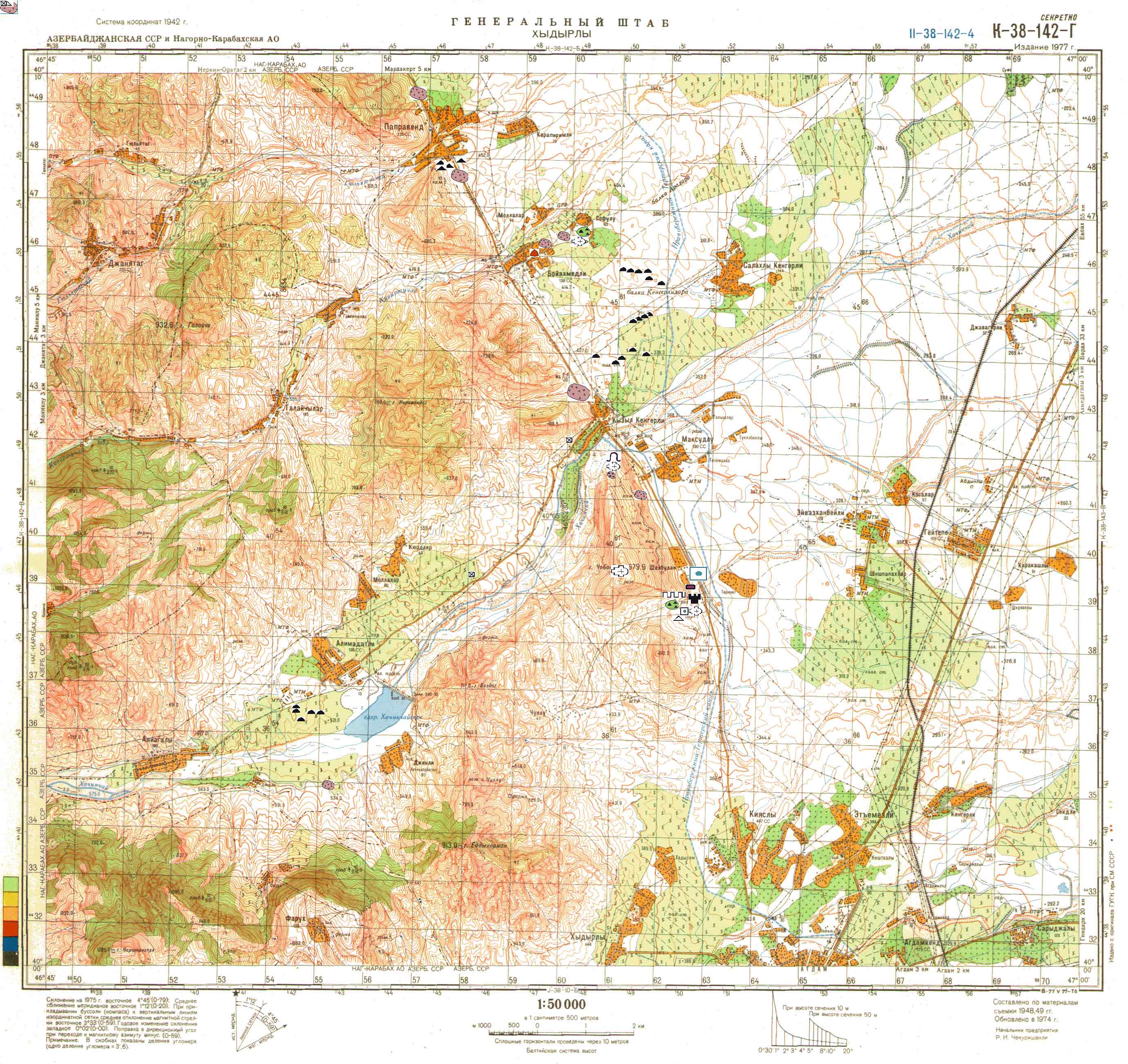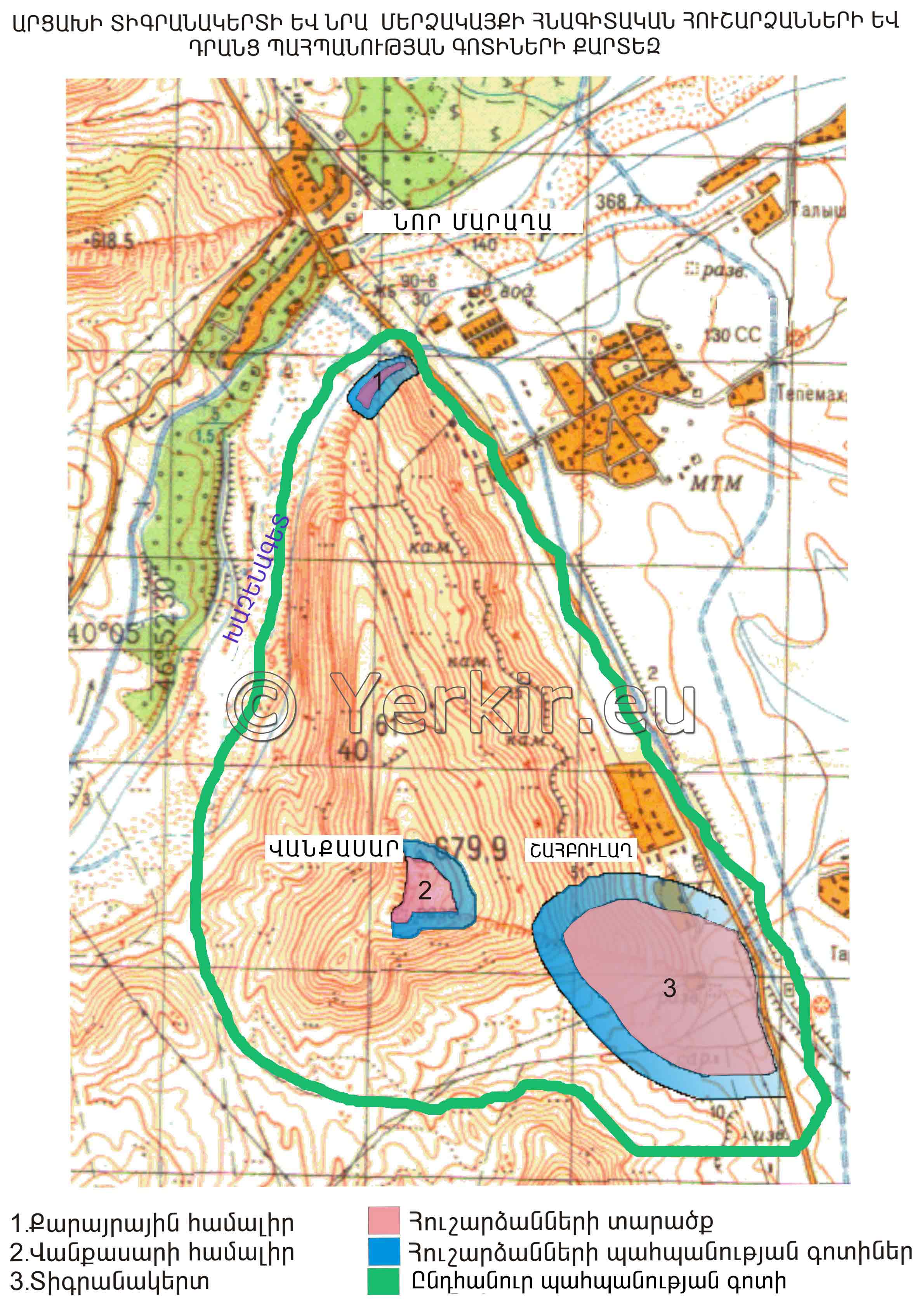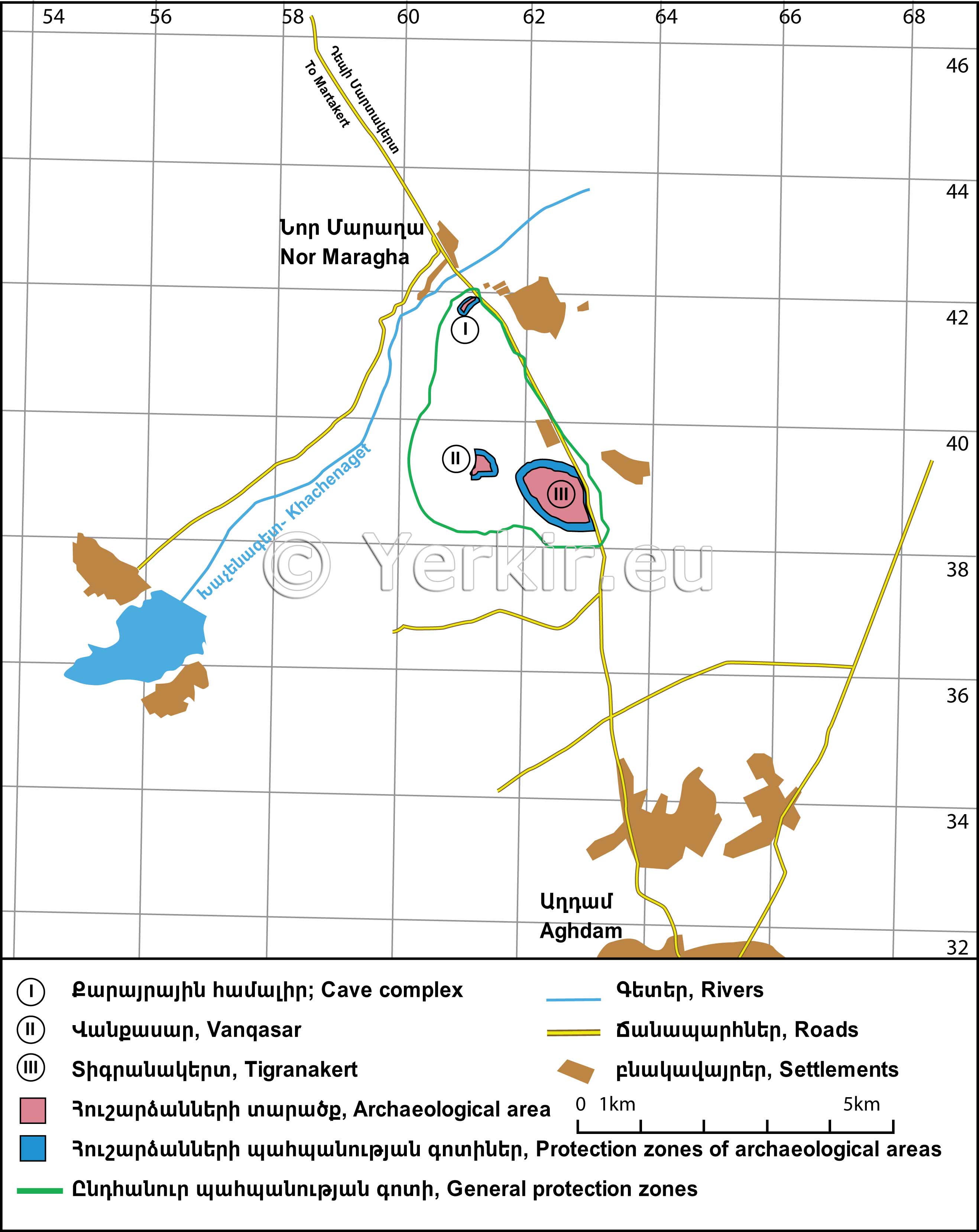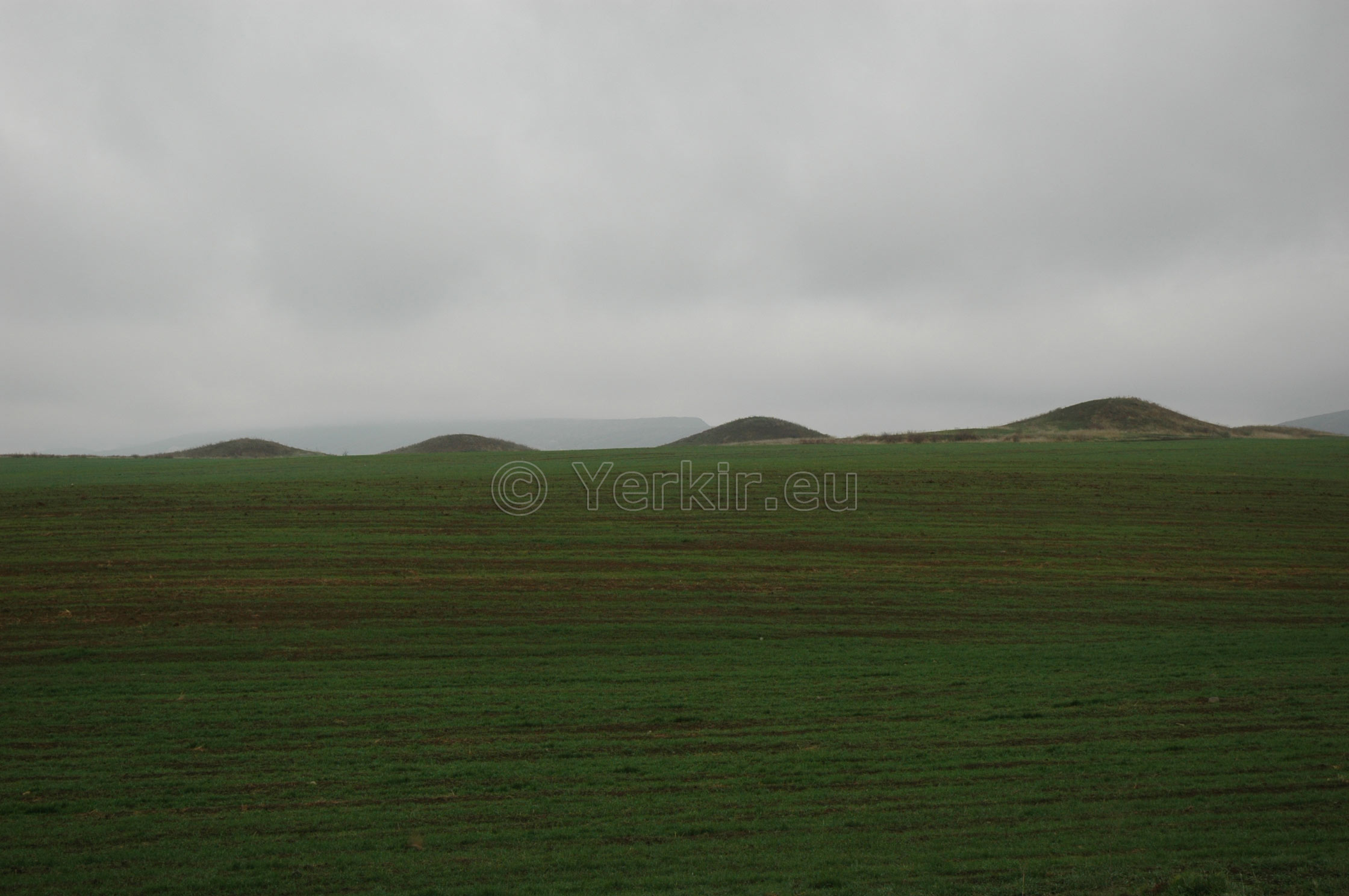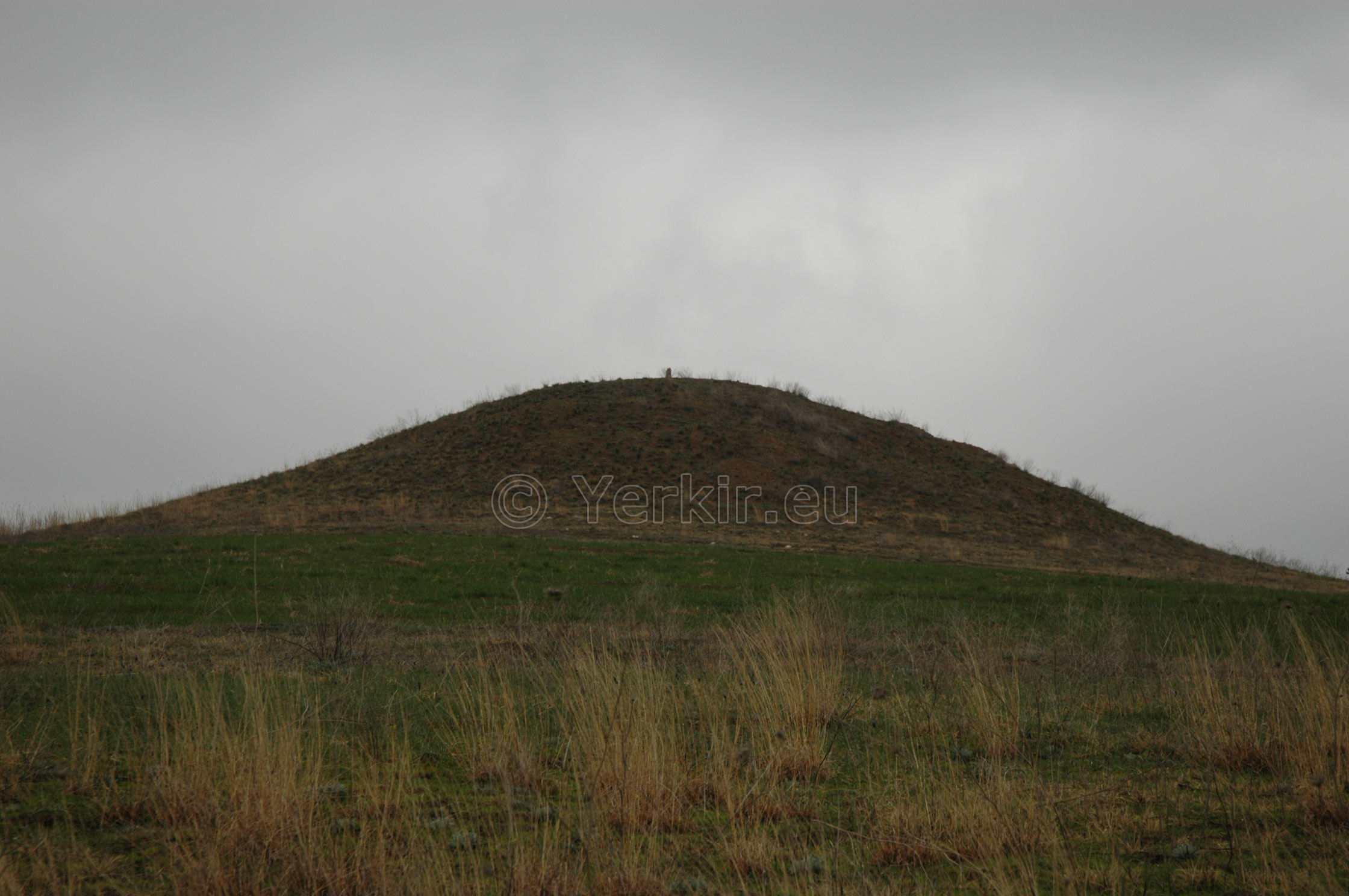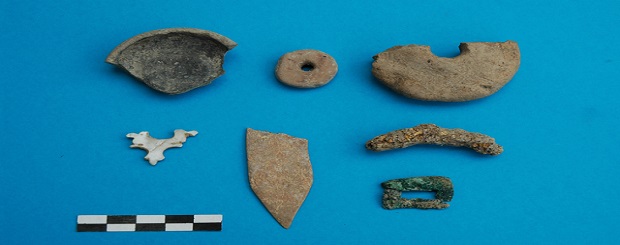
ONG YERKIR – Karabagh, an Armenian presence millennia: Tigranakert of Artsakh
//yerkir.eu// CULTURE – HISTORY:
Thanks to the NGO YERKIR, the discovery of the ancient city of Tigranakert of Artsakh made it possible to dismantle the negationist theses of Azerbaijan on the settlement and the history of Karabakh but also to prove that the Republics of Armenia and d ‘Artsakh are the heirs of a state that has endured for more than two thousand years.
On August 10, 2006, the team of archaeologists commissioned by the NGO YERKIR managed to find the surrounding wall of the citadel built under Tigrane-le-Grand. The structure consisted of blocks of stones attached to each other with an innovative technique for the so-called “swallow’s tail” era that is found on other Armenian archaeological sites. Excavations of the urban area and adjacent mounds have also been launched. These discoveries prove that the Armenian presence predates the era of Khatchenaguede (ancient Armenian name of the region of Agghdam, 5th century) and that Armenians have been present in this region since at least the first millennium BC. J.C.
On December 14, 2005, during the annual session of the Azerbaijan Academy of Sciences in Baku, the President of Azerbaijan Ilham Aliyev publicly urged his academicians to scientifically prove to the whole world that the Armenians were “conquerors who came to Karabakh from second millennium in order to colonize these territories where the Azeri natives had already lived for centuries ”. This negationist thesis was added to another developed by the Azerbaijani authorities who claimed that “the Armenians of Karabakh are Armenian Azeris and that the Karabakh region has never been Armenian”.
To counter the Azeri negationist theses on the settlement of Karabagh, the NGO YERKIR initiated a project of archaeological excavations in order to find the ancient city of Tigranakert of Artsakh, founded under the reign of Tigrane-le-Grand (95-55 BC. JC) in the Aghdam region. The team of historians, topographers, architects, archaeologists and international experts put in place highlighted the different Armenian periods (Bronze Age, Ancient, Medieval and Contemporary) of this region. In partnership with the Institute of Archeology of the Armenian Academy of Sciences, archaeological excavations began under the direction of archaeologist Hamlet Petrosyan.
Genesis of the Tigranakert archaeological excavation project in Artsakh
The historical-cultural element is one of the determining factors in the resolution of the Nagorno-Karabakh (Artsakh) conflict. The Armenian presence in Nagorno-Karabakh (Artsakh) is attested as homogeneous from antiquity until the 18th century. The incursions of nomadic and pastoral “Tatar” tribes and the policy of “divide and rule” for the Empires of Iran, Ottoman and Russian have favored the establishment of non-indigenous populations in this territory. The historical, architectural heritage and archaeological remains scientifically demonstrate that the Nagorno-Karabakh (Artsakh) territory is only the western continuity of historic Armenia.
With this in mind, in 2005, a group of scientists (historians and archaeologists from the Armenian Academy of Sciences) was commissioned by the NGO Yerkir to study historical, topographical and archaeological sources with the aim of find one of the 4 ancient cities bearing the name of Tigranakert, one of which is in Artsakh, founded during the reign of the Armenian king, Tigrane-le-Grand (95-55 BC).
According to the medieval Armenian historian Sepeos, a town called Tigranakert belonged to Artsakh province. Topographic sources and historical studies assumed that the ruins of the ancient city of Tigranakert of Artsakh should be sought in the Khatchenaguede valley, at the exit of the Askeran region at the foot of the mountain of the Vankassar church. . The preliminary archaeological study carried out on the ground made it possible to discover the fragments of ruins of a fortification of an ancient city, a vast cemetery and large plots which sheltered tombs of the same era.
The team started their research from the Khatchénaguède plain by carrying out the investigation on a 10 km perimeter. This research made it possible to confirm the presence of archaeological and architectural vestiges dating from 4 different historical periods (age of iron and bronze, ancient, middle ages and contemporary). The cartography, the demographic, historical studies and the archaeological excavations then accredit the thesis of the presence of the city of Tigranakert.
On August 10, 2006, archaeological excavations led by Professor Hamlet Petrosyan of the Institute of Archeology of the Academy of Sciences of Armenia, on the initiative of the NGO Yerkir, managed to find the surrounding wall of the ancient citadel of Tigranakert.
The preliminary study of 2005 and the archaeological excavations of 2006 and 2007 clearly demonstrated that the city of Tigranakert existed continuously from its foundation during the 1st century BC. Until the 13th-14th century. The constructions and objects from the excavations are similar to those found in other regions of Armenia, especially in the Ararat plain, which once again corroborates the testimony of medieval Armenian historians who underline the Armenian presence in this region since antiquity.
Tigranakert’s archaeological finds have exceptional historical, cultural and religious value, not only for Armenians, but as a world heritage site. The remains of a medieval V-VI century basilica discovered on the outskirts of the city, as well as the V-VII century cave monastic complex of Khachenaguede prove that Tigranakert was one of the centers of Armenian civilization.
Study mission on the location of Tigranakert of Artsakh from 2005
In March 2005, the NGO Yerkir commissioned a study group made up of historians and archaeologists under the leadership of Professor Hamlet Petrosyan of the Armenian Academy of Sciences. The objective of this mission was to locate the geographic area of the ancient city of Tigranakert of Artsakh by studying historical, topographical and archaeological sources.
Historical sources of the presence of Tigranakert of Artsakh
Tigranakert of Artsakh is mentioned for the first time by Armenian historians of the 7th century AD. AD, Sébéos and Movses Kaghanakatvatsi. According to their testimony, the city was located on the bank of one of the main rivers in the region, Khatchénaguède. Written sources, topographic and archaeological research have confirmed the hypothesis that the ruins should be sought in the low hills of the Khatchénaguède river, where the mountain touches the plain and digs deep depressions and where, in ancient times, the land which extend between the southwest and the southeast served as a boundary between the provinces of Artacha and Outik of Greater Armenia. These lands were called Tigranakert land in the 12th-14th centuries. Since the 13th century, the Armenians and the Persians named Tkrakert-Tngrnakert the ruins which were near the waters at the foot of Mount Vankassar. So in order to clearly and surely identify Tigranakert, the research team chose the Khatchénaguède valley and studied its monuments within a radius of 10 km. In the low hills of Khatenaguede, around Tigranakert, some vestiges of at least four historical and cultural periods have been unearthed, namely the Bronze Age, the Hellenistic period, the beginning of Christianity and the High Middle Age.
A fortress from the first half of the 1st century was recently unearthed on the summit located north of Mount Vankassar. The temple of Mount Vankassar, near the sources of Shahboulagh, dates from the 7th century. There are inscriptions on its walls as well as signs of master masons who are mainly Armenian. There are also cross-shaped stones (khachkars). One of the entrances, located in the upper part, was decorated with cross-shaped engravings which were later scratched and erased by the Azeris. The temple was restored by the Azeris but lost its essential volumes. Among the monuments of this region, there are two large isolated ruins, located on the left and right banks of the Khatchénaguède, almost equidistant from one of the district of Sofoulou and the sources of Shahboulagh. Research makes it possible to identify them as the probable places of Tigranakert. The large settlement near Sofoulou, well known as Giyavourkala (the fort of the Infidels) was partially studied by Azeri archaeologists during the 60s and 70s. The fortified area was preserved as well as the ruins of the church , sarcophagi, obelisks in the shape of a cross and pottery elements dating from the 5th and 6th centuries. There was a long Armenian inscription on one of the 9th century sarcophagi. She was transported to Baku, and no one knows what has become of her. However, no research conducted so far has uncovered objects prior to the V-IX centuries and even less before the reign of Tigrane-the-Great. The research also turned to the surroundings of Shahboulagh, known to travelers of the 19th century under the names of Tngrnagert, Taranyourt or Tarnagyout whose pronunciation is very close to the Tgrakert of Movses Kaghankatvatsi and, of course, Tigranakert. The result of the research could be considered sensational because vestiges of large fortifications have been found on the slopes of Mount Vankassar, as well as the ruins of a central area of a city and an early Christian cemetery. The most important was the presence of many ceramic shards in the fortified part dating from the 1st century BC. AD
Area determined for the excavations of Tigranakert
Conclusion of the topographical and archaeological data of the 2005 mission
According to the first results of this topographic and archaeological research, the city of Tigranakert was a classical Hellenistic city consisting of a fortified area with a citadel, a commercial area, vast agricultural lands and cemeteries. The town was supplied with water apparently from springs at the foot of the mountain and from a canal coming from Khatchénaguède which also runs at the foot of the mountain. The fortified area was located in the lower part of Mount Vankassar and rose from the springs to its summit. It was separated from this summit and the central area by a trench. The walls were reinforced by semicircular towers and many other buildings. The inclined slopes had been transformed into terraces by means of buttresses for the construction of public buildings. Among the ceramic fragments found in the portions of the walls, there are several polychrome fragments with a clear surface and decorated with red ribbons or triangular or striped patterns, as well as other drawings that characterize the ceramics of the first half of the s. av. Which can be linked to discoveries made in other sites of ancient Armenia dating from the Hellenistic period. In the non-fortified part, the ruins of the early Christian church and the ceramic shards from the same period prove that the establishment was still occupied and active in the early days of Christianity. The presence of sources that favored the development of the city is an essential factor in the choice of site. Thus, archaeological research, supplemented by the study of manuscripts and topography, has given sufficient evidence to identify Tigranakert in the lower part of the mountain which extends from Vankassar to the sources of Shahboulagh and in the fields located south of it.
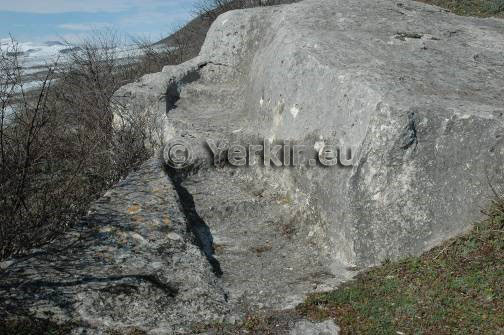
Kurgans mound (stone and bronze age)
These characteristic monuments of Bronze Age-Iron tombs are located between the villages of Sofoulou and Nor Maragha. The tumuli clearly indicate a culture dating from the Bronze Age and the Iron Age. The Kurgans tumuli are easily recognizable by their conical tomb-like shapes measuring 6 to 12 meters high and 40 to 75 meters in diameter and are 3 to 4 km apart. Such burial mounds in the Nagorno-Karabakh region (Artsakh) have been unearthed near Khodjalou, Choch and Karablour. The culture of the tumuli, according to some specialists, is related to the Indo-European peoples and their possible migrations in this region. The presence of anti-personnel mines in the vicinity of these tombs did not allow for an in-depth investigation. Excavations around this site have uncovered bronze-iron gatehouses.

Khachénaguède, paleochristian troglodyte church of VI-VIIème century
On the excavation site of the ancient city of Tigranakert of Arstakh, 6 km north in the direction of Mardakert, is the site of Khatenaguede dating from the 5th-7th century. This site located in a cliff consists of a church with narthex carved in the rock, a ceremonial room, a courtyard with many tombstones, an irrigation canal and tunnels whose walls are adorned with cut crosses with Greek and Armenian inscriptions.
In May 2006, a team of archaeologists and topographers began taking measurements, drawing plans and photographing the monuments referenced during the 2005 survey mission to the Khatenaguede site commissioned by the NGO Yerkir. After a few days of work, it seemed necessary to extend the research and excavations because the church dug in the cliff included networks of tunnels and canals, as well as scattered monuments which led to the discovery of other monuments in connection with the site of the ancient city of Tigranakert of Artsakh.
This paleochristian monastic cave complex is unique in its location. The stairs leading to the church are narrow, not suitable for pilgrims and protective platforms line the route. The first Christians settled in this region were concerned with securing this place of worship from threats coming from the plain and the surrounding steppes. This complex poses a series of questions whose solutions are to be sought in the ancient Armenian history and that of the Christianization of this region. During the excavations carried out by Hamlet Petrosyan in June 2006, Gusto Traina, professor of Roman history at the University of Lecce (Italy) studied the Greek inscriptions which were found in order to be able to define the nature as well as the period of these registrations. For more details see the article Archaeological excavations of the cave cave of Khatenaguède in Artsakh.
Result of the 2006 archaeological excavations
Following the results of the topographic and archaeological study mission, the first archaeological excavations were carried out thanks to the NGO Yerkir and the financial support of the Armenia and Philippossian Foundations of Geneva. Unexpectedly, the 2006 excavation campaign produced results very quickly and quite unexpectedly because it uncovered a section of one of the foothills of the city’s central terrace; a portion of the fortifications of the citadel made up of blocks assembled with dovetail-shaped mortises; part of the Christian basilica of the 5th-6th centuries; an early Christian cave-sanctuary and the channel cut into the rock to feed it, near Tigranakert.
The foundations of the Tigranakert fortifications of Artsakh (ancient period)
The walls of the ramparts have borders with narrow, high and sloping levels, which are located at about 400 meters above sea level on the northern slope of the fortified district of Tigranakert. The basalt and marble rocks of the capitals of Armavir and Artacha are similar. It is obvious that these are the stone foundations that were used for the fortifications. Semicircular, these hollowed parts are in two places and spread along the surrounding walls. This indicates that the fortifications were previously supported by semicircular towers. Small perpendicular parts near the borders show that the different towers were built after the walls.
The fortifications of the citadel of Tigranakert of Artsakh (ancient period)
The defensive wall was built with soft stone blocks, smooth surfaces grouted with dovetail-shaped mortises, without mortar using a technique called “swallow tail”. Its thickness is 2.5 m, and the excavated portion is 12 m long (the main part with the dovetails is more than 7 m). The rest will be searched in another campaign. This is an essential discovery which contributes to the identification of Tigranakert. Constructions of this nature and technique are known from the ruins of other late Hellenistic and classical cities in Armenia (Armavir, Artashat, Garni). This very neat enclosure is characteristic of the great Hellenistic cities, especially the capitals, and is an argument in favor of its identification with Tigranakert. The ceramic fragments from outside the enclosure, mainly from the Hellenistic and medieval periods, are good witnesses to the way of life of its inhabitants, in particular the magnificent fragments of colored ceramics which date, without any doubt possible, from the r s. av. AD, and mortar.
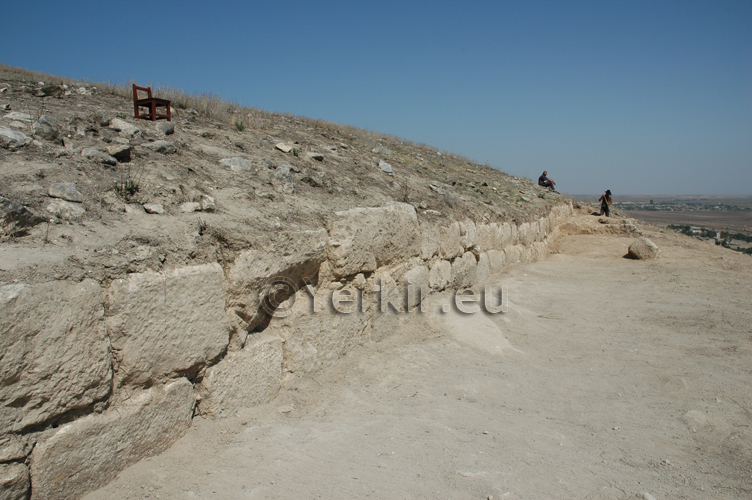
Basilica of the V – 6th century (medieval period)
During excavations below the hill where the fortifications of the ancient city of Tigranakert were discovered, a Christian basilica from the 5th-6th century was brought to light. Until the 12th-14th century, the town of Tigranakert had endured extending down the hill from the citadel. Excavations of around 30m in the central part of the city have uncovered the ruins of a church built with very large blocks of stone and mortar. So far, portions of the prayer hall and a semicircular altar have been discovered, and a limestone disc engraved with signs of the cross corresponds to similar discoveries made in other Armenian buildings such as Yererouyk, Tsitsernavank and Koghb; it is one of the first Christian sculptures. Several important clues show us that at the beginning of the medieval period, Tigranakert had preserved its Armenian nature, and that the writings of Christian historians of Armenia like Sebeos and Movses Kaghankatvatsi on Tigranakert correspond fully to the historical facts. The archaeological material unearthed in this central part of the city, notably hundreds of ceramic fragments, various objects and instruments, also prove that the city was indeed founded in the course of the 1st century AD and that it lasted at least until the 12th-14th century AD. AD
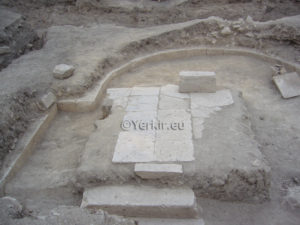
www.yerkir.eu/activites/patitage/karabagh-une-presence-armenienne-millenaires-tigranakert-dartsakh/
English translation – LOUSAVOR AVEDIS:

